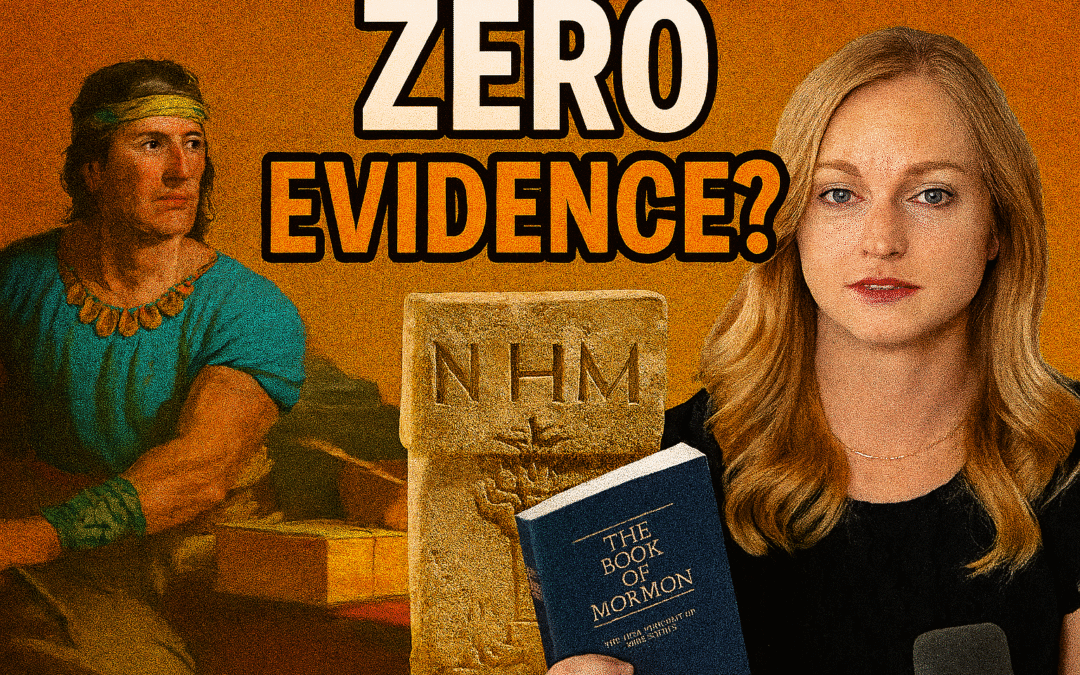Bottom Line
There is no smoking-gun “Zarahemla tablet,” but the claim that there is “literally nothing” is false. Nahom alone defies that claim. Mesoamerican evidence aligns with dozens of textual features. The real question is not “is there nothing?” but “are we willing to evaluate the data fairly?”
| Episode | “Evidence the Book of Mormon Is False” |
|---|---|
| Title | “There is zero archaeological evidence for the Book of Mormon” |
| Category | Archaeology & Historicity |
| Quote | “There’s never, ever been a single piece of archaeological evidence to support the Book of Mormon. Literally nothing.” — 00:19:41 |
| Timestamp | 00:19:41 |
| Core Claim | The Book of Mormon has zero supporting archaeological evidence; no cities, places, names, or artifacts have ever been discovered. |
| Conclusion | False / Overstated |
| Logical Questions |
|
🔍 Core Findings
The claim that there is “literally nothing” to support the Book of Mormon archaeologically is inaccurate and misleading. It ignores significant findings in both the Old and New Worlds that align with Book of Mormon descriptions.
🧭 Key Evidence from the Old World: Nahom
1 Nephi 16:34 references “Nahom,” where Ishmael was buried. In 1994, archaeologists discovered ancient altars in Yemen inscribed with the tribal name “NHM” — matching both name and location. These date to the correct time period for Lehi’s journey and confirm a key waypoint on the route.
“This is the first direct archaeological correlation with a specific location mentioned in the Book of Mormon.”
— S. Kent Brown, BYU Studies, 2002
🗺️ Mesoamerican Correlations
Dozens of cultural and geographic details in the Book of Mormon — including cities, roads, markets, warfare, and natural disasters — align with Mesoamerican civilizations. No definitive site has been found, but the limited geography model shows high consistency with the text.
“The Book of Mormon’s setting—based on city sizes, travel distances, topography, and climate—best fits a limited geography in Mesoamerica.”
— John L. Sorenson, An Ancient American Setting
🔎 Why No Confirming Names?
The absence of direct inscriptions (e.g., “Zarahemla was here”) is expected:
- Ancient cities were renamed or destroyed.
- Records were hidden, destroyed (Mormon 6–8), or looted.
- Archaeology rarely preserves tribal or scriptural names unless carved in stone.
📚 Sources
- S. Kent Brown, “Nahom and the ‘Eastward’ Turn,” BYU Studies 42.2 (2003)
- Warren P. Aston, Lehi and Sariah in Arabia (2015)
- John L. Sorenson, An Ancient American Setting for the Book of Mormon (1985)
- Mark A. Wright, “Heartland as Hinterland,” Interpreter Vol. 13 (2015)
- Mormoner.org – Nahom Archaeology

